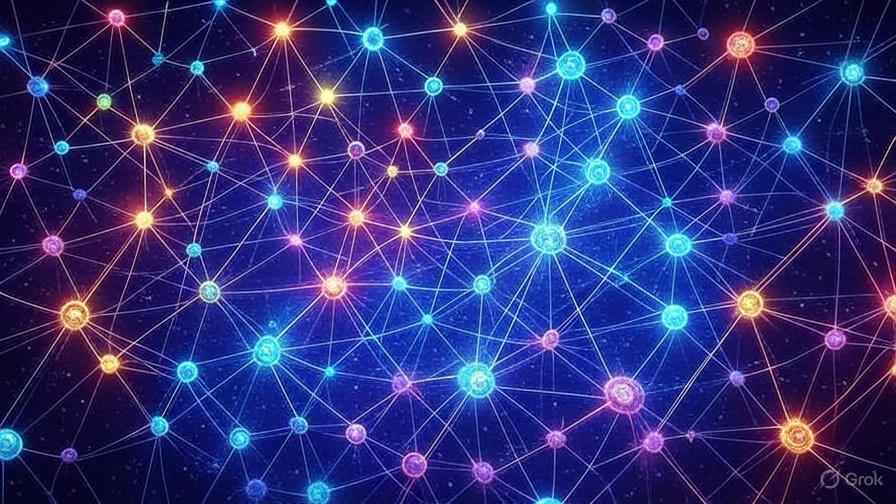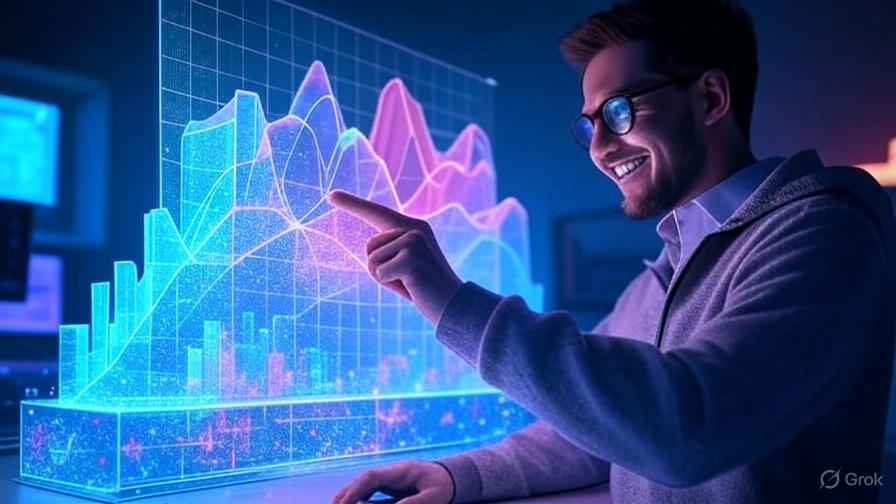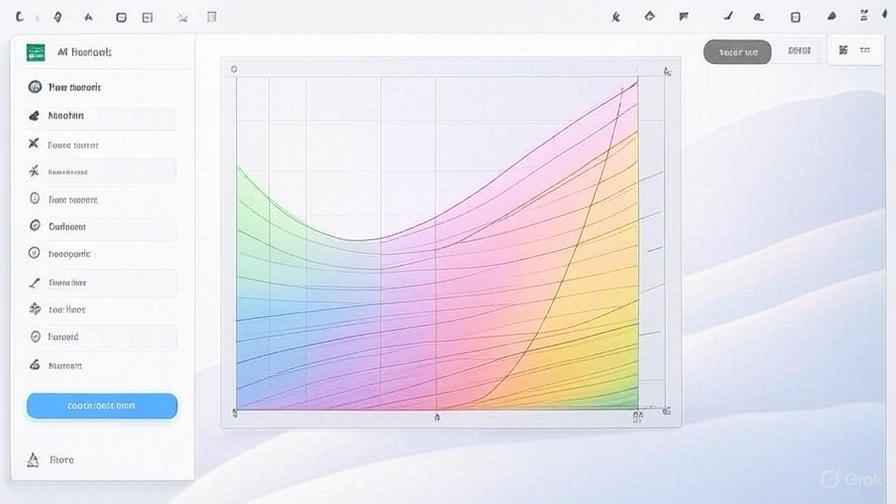The world of mathematics, data science, and engineering has long been defined by the challenge of visualizing complex information. For decades, researchers, students, and professionals have grappled with the intricacies of plotting multi-variable equations, visualizing high-dimensional datasets, and rendering intricate scientific models. The traditional methods, often requiring painstaking manual calculations and specialized software, are not only time-consuming but also prone to error. This is where the true revolution begins: the emergence of AI for graphing complex functions. This isn’t just an upgrade; it’s a complete paradigm shift that simplifies the most daunting visualization tasks, making them accessible to a much broader audience.
How to Use ChatGPT to Write a Research Paper Outline
What is AI for Graphing Complex Functions?
AI for graphing complex functions refers to the use of artificial intelligence and machine learning to automatically visualize mathematical equations and large datasets. It simplifies advanced graphing, saves time, and provides deeper insights with intelligent data interpretation.
Artificial intelligence, with its ability to process vast amounts of data and identify patterns, is perfectly poised to transform how we interact with complex mathematical and scientific concepts. By leveraging machine learning algorithms, AI graphing tools can interpret raw data or complex equations and instantly generate insightful, accurate, and aesthetically pleasing visualizations. From a simple quadratic equation to a multi-dimensional scatter plot representing a deep learning model’s output, AI takes the guesswork and grunt work out of the process, allowing you to focus on the analysis and insights.
The Problem with Traditional Graphing: Why AI is a Game-Changer
Before we dive into the power of AI, let’s acknowledge the pain points of the past. Plotting complex functions often involves several hurdles. First, the sheer mathematical complexity can be overwhelming. Take, for instance, a 3D surface plot defined by a two-variable function. To generate this manually, you would need to calculate a dense grid of points, a process that is both tedious and highly inefficient.
Then there’s the issue of data visualization in scientific research. High-dimensional data, common in fields like genomics, physics, and financial modeling, is nearly impossible to visualize using traditional 2D or 3D plots. You might have thousands of data points, each with dozens or even hundreds of features. How do you find the hidden relationships and clusters? Traditional tools often fail here, offering only static, limited views that obscure crucial patterns.
The solution to these challenges lies in a system that can not only handle the scale but also understand the underlying structure of the data itself. This is precisely what AI for graphing complex functions offers. It goes beyond simple plotting; it’s about intelligent interpretation and automated insight generation.

How AI Graphing Tools Work Their Magic
At the core of an AI graphing tool are sophisticated algorithms, often based on machine learning and deep learning. These tools don’t just “draw” a graph; they perform a series of intelligent steps to render a visualization.
First, the tool parses the input, whether it’s a mathematical equation or a raw dataset. For equations, a symbolic computation engine might interpret the variables and operators. For data, a machine learning model might first analyze the data’s dimensions, types, and potential relationships.
Next, the AI selects the most appropriate visualization method. For a simple function, a 2D plot might suffice. For high-dimensional data, the AI might automatically suggest a dimensionality reduction technique like PCA (Principal Component Analysis) or t-SNE
Learn more about PCA from Scikit-Learn
Detailed guide on t-SNE by Scikit-Learn
(t-Distributed Stochastic Neighbor Embedding) to create a more interpretable 2D or 3D plot. This is where the AI’s intelligence truly shines. Instead of you having to figure out the best method, the tool automates this crucial decision-making process.
Finally, the AI renders the visualization, often in real-time. But it doesn’t stop there. Many of these tools offer interactive features, allowing you to manipulate the variables, zoom into specific areas, or even animate the graph to see how a function changes over time or with varying parameters.
Key Features of AI-Powered Data Visualization Tools
The best AI graphing tools offer a suite of features that go far beyond what traditional software can provide. These features are designed to enhance your workflow, accelerate your insights, and make the entire process more intuitive.
- Automated Visualization Selection: No more guessing which chart type is best. The AI analyzes your data and suggests the most effective visualizations—be it a scatter plot, a bar chart, a heatmap, or a more complex network graph.
- Real-time Interaction: Change a parameter in your function, and the graph updates instantly. This is crucial for exploring different scenarios and understanding the impact of variable changes on a function’s behavior.
- Handling High-Dimensional Data: AI can project multi-dimensional data onto a 2D or 3D space, making complex relationships visible. This is a game-changer for fields like genetics, where datasets can have thousands of features.
- Predictive Graphing: Some advanced tools can take a partial dataset or a function and use machine learning to predict and visualize potential future trends or behaviors. This is particularly useful in fields like finance and predictive maintenance.
- Natural Language Processing (NLP) Integration: Imagine typing a request like “Show me a 3D plot of the function z = sin(x) + cos(y)” and having the tool generate the graph. This is a reality with many modern AI graphing tools, making them incredibly user-friendly.
In addition to these features, modern AI visualization software works like an intelligent graphing calculator. From mathematical modeling to engineering visualization, these tools are becoming essential across multiple industries. If you’re searching for the best AI graphing tools in 2025, you’ll find options that combine simplicity, power, and automation.
The Role of Machine Learning for Complex Functions
The integration of machine learning into these tools is what elevates them from simple calculators to intelligent assistants. Machine learning models, particularly deep learning networks, are trained on vast datasets of mathematical functions, scientific data, and their corresponding visualizations. This training allows the AI to learn the underlying rules and patterns, enabling it to generalize and create accurate visualizations even for functions or datasets it has never seen before.
For instance, a deep learning model can be trained to recognize the characteristics of a chaotic system from its mathematical equation and automatically apply the appropriate visualization techniques, such as a phase space plot. This level of autonomy and intelligence is what makes AI-powered tools so valuable for researchers and students tackling truly complex problems.

Use Cases: Where AI for Graphing is Making a Difference
The applications of AI for graphing complex functions are vast and growing. Here are a few examples of how this technology is being used across different industries:
- Scientific Research: From visualizing protein folding simulations to rendering the complex flow dynamics in fluid mechanics, AI is accelerating scientific discovery.
- Finance: Financial analysts use AI graphing tools to visualize high-frequency trading data, analyze market trends, and model the behavior of complex financial instruments.
- Education: Students can use AI tools to intuitively understand abstract mathematical concepts. Instead of just seeing an equation on a blackboard, they can interact with its visual representation, making learning more engaging and effective.
- Engineering: Engineers can visualize the stress distribution on a complex mechanical part or model the aerodynamic performance of a new aircraft design.
- Data Science & Analytics: This is perhaps the most prominent application. AI tools help data scientists quickly explore large datasets, identify anomalies, and communicate their findings through compelling, interactive visualizations.
Step-by-Step Guide: Getting Started with AI Graphing
Ready to dive in? Here’s a simple guide to get you started with an AI-powered graphing tool:
- Choose Your Tool: Research and select an AI graphing tool that fits your needs. Popular options include dedicated software like MATLAB or Python libraries like Matplotlib and Plotly with AI extensions, or even new SaaS platforms.
Explore Python Matplotlib Official Docs
Check out Plotly Python Graphing Library
Learn more about MATLAB AI & Visualization
- Input Your Data or Function: You can usually either type in your mathematical equation directly or upload a dataset in a common format like CSV or JSON.
- Let the AI Work: The tool will analyze your input and automatically generate a visualization.
- Customize and Explore: Don’t stop at the first result. Use the tool’s interactive features to change colors, zoom in on specific areas, and manipulate variables to gain deeper insights.
- Share Your Findings: Most tools allow you to export your visualizations in various formats, making it easy to share your results with colleagues or integrate them into presentations.

The Future of AI in Statistical Modeling and Data Analysis
The integration of AI goes far beyond simply plotting points. In the realm of statistical modeling and data analysis, AI is enabling entirely new capabilities. AI can not only visualize data but also automatically suggest which statistical models are most appropriate for your dataset. It can identify correlations, detect outliers, and even run a series of hypothesis tests, presenting the results in an easy-to-understand visual format.
This level of intelligent automation is particularly useful in exploratory data analysis (EDA), where data scientists spend a significant amount of time just trying to understand the lay of the land. With AI, this process is dramatically sped up, freeing up time for more advanced analysis and model building. Deep learning in data analysis, for example, is making it possible to extract and visualize patterns in unstructured data, such as text, images, or audio, in a way that was previously unimaginable.
How to Choose the Best AI Graphing Tool for Your Needs
With so many options on the market, choosing the right tool can be tricky. Here are some factors to consider:
- Ease of Use: If you are a student or a non-technical user, look for a tool with a user-friendly interface and natural language processing capabilities.
- Functionality: Do you need to graph 2D functions or complex 3D surfaces? Do you need to handle high-dimensional data? Make sure the tool has the features you need.
- Integration: Check if the tool integrates with other software you use, such as programming languages (Python, R) or data analysis platforms.
- Cost: Some tools are free and open-source, while others are subscription-based. Consider your budget and the value the tool provides.
- Community Support: A strong community can be invaluable for troubleshooting and learning new tips and tricks.
Conclusion: A New Era of Visualization with AI
Google AI Research on Data Visualization
The days of manual, painstaking graphing are quickly fading into the past. The rise of AI for graphing complex functions marks a new era where visualization is no longer a chore but an intuitive, insightful, and even collaborative process. Whether you are a mathematician exploring abstract concepts, a scientist analyzing groundbreaking data, or a data analyst trying to make sense of a business problem, AI-powered tools are here to help.
By automating the most complex parts of the visualization process, these tools empower us to focus on what truly matters: understanding the story behind the data, identifying key insights, and making informed decisions. As AI technology continues to advance, we can expect even more sophisticated and intelligent graphing tools that will further blur the line between computation and human creativity. The future of visualization is here, and it’s powered by artificial intelligence.
📌 Further Reading on AI Tools
If you’re interested in exploring more ways AI can simplify education and research, check out these guides:
- How to Use ChatGPT to Write a Research Paper Outline
- The Ultimate Guide to Finding the Best AI Essay Writer for College Students
- 9 Ultimate AI to Summarize Research Papers Easily in 2025
👉 Ready to explore the best AI graphing tools?
Check out our curated list of top AI visualization platforms and start simplifying your complex functions today!
FAQ Section
Q1: What is AI for graphing complex functions?
AI for graphing complex functions refers to the use of artificial intelligence and machine learning algorithms to automatically generate and visualize mathematical functions and complex datasets, simplifying the process for users.
Q2: How does an AI graphing tool handle high-dimensional data?
An AI graphing tool uses machine learning techniques like dimensionality reduction (e.g., PCA, t-SNE) to project high-dimensional data onto a 2D or 3D space, making it possible to visualize and identify patterns that would otherwise be hidden.
Q3: Can these tools be used for scientific visualization?
Yes, AI for scientific visualization is a growing field. These tools are increasingly used to plot and analyze complex scientific data, from molecular structures to fluid dynamics and astronomical data.
Introduction to Scientific Visualization – Wolfram
Q4: Is AI-powered graph plotting only for experts?
No, one of the main benefits of AI-powered graph plotting is that it makes complex visualization accessible to a wider audience, including students and professionals who may not have a deep background in programming or advanced mathematics.
Q5: What’s the difference between a traditional graphing calculator and an AI tool?
A traditional graphing calculator is a simple tool that plots a function based on a pre-defined set of rules. An AI tool, on the other hand, can interpret a wide range of inputs, automatically select the best visualization method, and even offer predictive analysis.
Q6: What role does deep learning in data analysis play in this?
Deep learning models are used to train the AI to recognize complex patterns in data and functions, allowing the tool to make intelligent decisions about visualization and analysis, especially for large and unstructured datasets.
Q7: Which are the best AI graphing tools available in 2025?
Some of the best AI graphing tools in 2025 include Python-based libraries like Plotly and Matplotlib (with AI extensions), MATLAB with AI integrations, and SaaS platforms such as Wolfram Alpha and Deepnote. These tools combine intelligent visualization with user-friendly interfaces.
Q8: Can I use AI for statistical modeling as well?
Yes, many advanced AI tools can not only visualize data but also perform statistical analysis, suggest appropriate models, and present the results in an intuitive visual format, enhancing the entire statistical modeling workflow.
Q9: Are there any free AI tools for graphing?
Yes, there are several free and open-source AI graphing tools and libraries available, such as Python libraries like Matplotlib and Plotly, which can be extended with AI functionalities.